Power of Culture Blog
Grants for Creative Individuals Now Available
Apply by Oct. 28, 2025 for unrestricted grants of $5,000 to artists, culture bearers, and creative practitioners
Maggie Holtzberg, Folklorist
Amy’s Judaica work involves custom design, selection of fine fabrics and notions, sewing, embroidery, lettering, and knot tying — all of Amy’s work is deeply informed by her practice of Judaism, familiarity with the sacred sartorial objects of religious ritual, and her educational background in psychology and family dynamics.
In addition to my recording gear, I had brought my late father’s tallit, tefillin, and yamulke as a way of reconnecting with these religious objects and to learn something of how tallises dating back to the mid-1930s differ from ones custom made today.

For a folklorist, I am remarkably uninformed about my own heritage. Unlike Amy, who attended Jewish Day school and high school, worships at a local synagogue, and is very involved in the Jewish community, I was raised without formal religious education and self-identify as a “secular Jew.” Although I have fond memories of attending Passover Seders with extended family and friends, I have never stayed home from school or work on Jewish holidays. And although my father’s family attended a conservative temple, the rabbi there was a socialist. My mother’s father was anti-organized religion and felt more affinity with socialism and unionism than Zionism. So it was especially meaningful to get tutored in the meaning of the contents of my father’s velvet tallis bag.
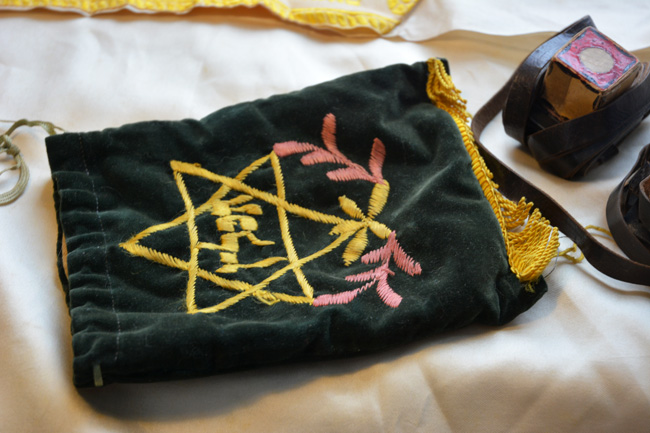
Amy looks at my father’s tallis with care. She says that it is typical of the early 20th century and most likely commercially made, noting that the edges are beautifully knotted. “The tassels mean nothing,” she explains “they’re just pretty. The only [tassels] that count are tied into the four corners of the garment and are called tzitzit.”
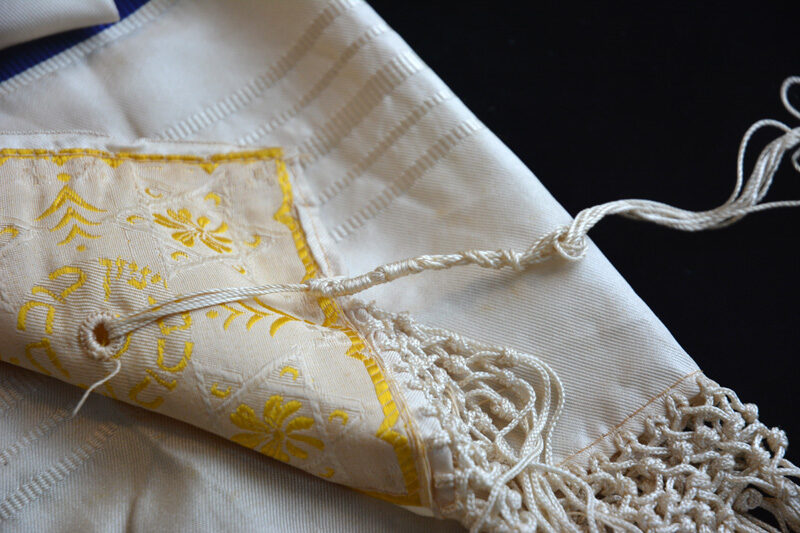
She goes on to explain that although Ashkenazi and Sephardic Jews have different ways of tying tzitzit, the combination of the number of strings, knots, and twists must equal 613. The sum represents the original number of mitvot (commandments) in the Torah (Jewish written law). “Honestly, nobody really can fulfill all 613; that’s the ideal. That’s perfection. It includes the number of times you pray each day. It includes kashrut (keeping kosher). It includes the way you treat your fellow man. It’s not just good deeds, it’s intentions – who you are as a person and how you relate to the world around you, and what your connection is to God.”
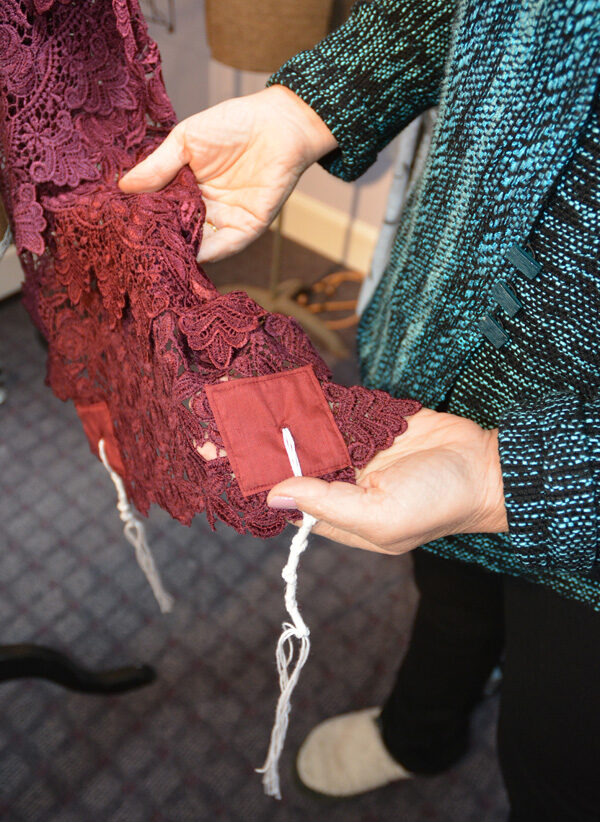
Once Amy finishes a tallis and the client returns to pick it up, she purposely leaves two of the four corners untied. “I will teach them how to tie and I will talk to them about the meaning of tying. And they will tie them themselves. So, it’s not just the design piece; the concept of it, it’s actually physically creating the garment . . . And so many times, when it’s a parent of a grandparent, and a Bar Mitzvah, then they’re all tying together. So that ’s going to be part of that memory as well.”
(YouTube provides an instructional video on YouTube for how to tie tzitzit.)
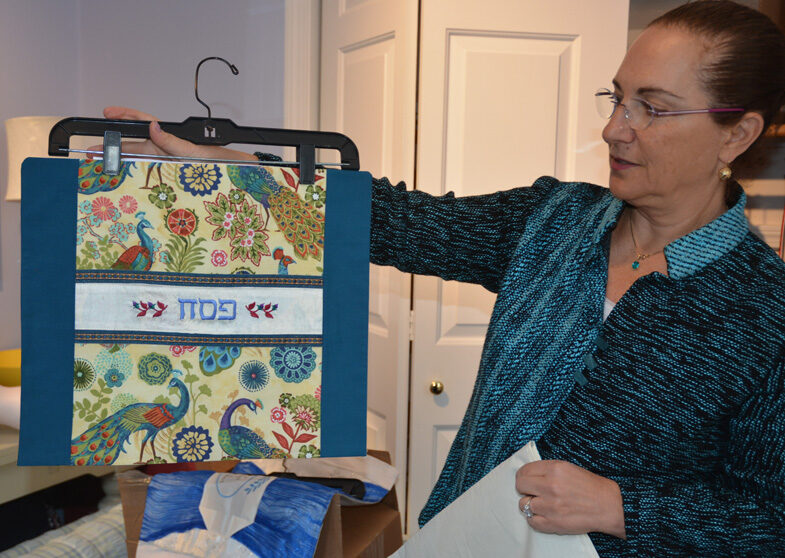
Having sewn all of her life, it was just a few years ago that Amy began making challah covers and afikomen bags.
Soon after, people started asking Amy to make a prayer shawl or head cover. She admits it was intimidating at first. I ask why and she responds, “Because it’s a lot of responsibility. A tallit is something that once you have you’re going to wear for the rest of your life. It represents your foray into Jewish adulthood. . . So now, I have this responsibility of bringing all of this to a piece of fabric. And because of this, it’s a daunting task.”
It is a task Amy Lassman is undeniably up to.

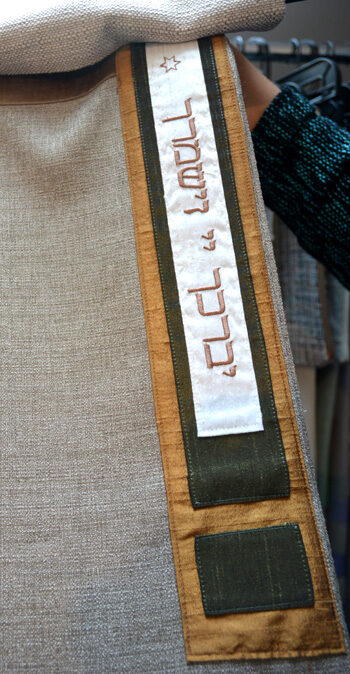
Through the many stories Amy told of working with clients, the most moving were those recounting her work with individual families with children who are preparing for a Bar or Batmitzvah, and adults who missed out on the experience. The process of making custom tallises reveals the power they hold as personal and ritual objects. Amy tells me of working with a family over the creation of the young man’s tallit. His favorite color is red, but his father preferred the more conservative and typical white and blue. The story is also recounted on her website:
“A family arrived in my studio to create a tallit for the upcoming Bar Mitzvah of a very bright young man. Before our appointment, he let me know that his favorite color is red. Armed with that fact, I shopped for silks that had red tones for him to use in the creative process. Meeting the expectations of mother, father and son can be a challenge. Combining the tradition of simple blue and white prayer shawls with a more contemporary vision that includes a variety of colors, Hebrew embroidery and symbols, we came up with a design that everyone loves. The attarah (neckband) is embroidered with the Priestly Blessing, the red silk is a subtle highlight on a finely woven cream woolen shawl and in the inside corner, his Hebrew name is embroidered in gold thread. When this young man came to pick up his tallit, I taught him how to tie the tzitzit (woolen strings) at the corners of his garment. When he wears his tallit, hopefully for many years of good health and happy occasions, he will always remember that he inspired the design, that his parents worked with him to create something meaningful and he is wrapped in his families’ love.”
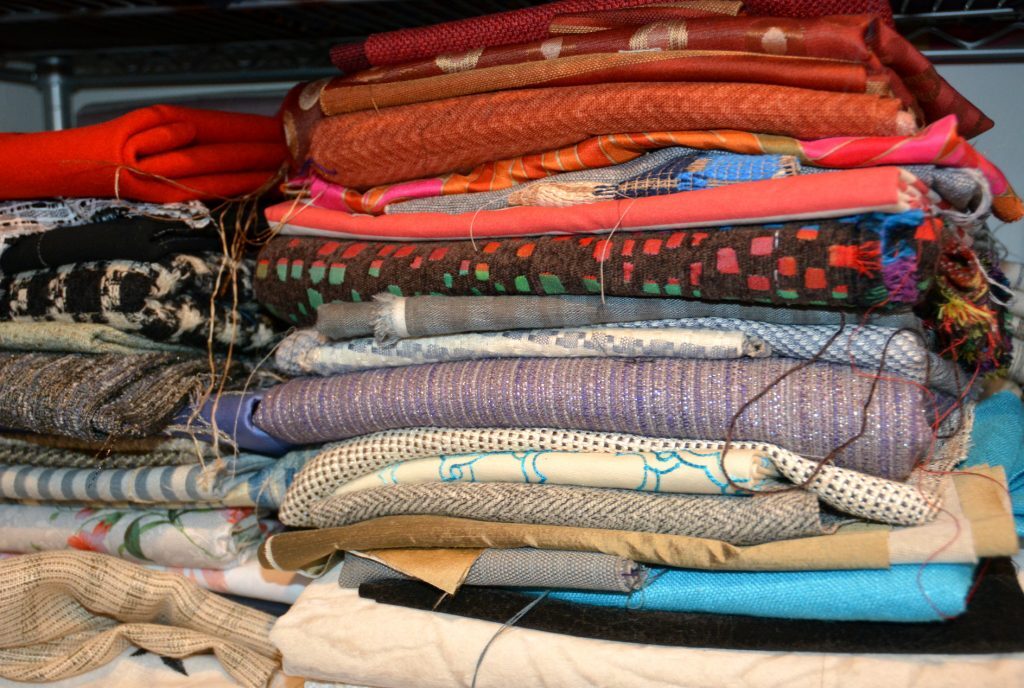
Amy described how clients often come in with an old tallit, saying they would really like their son or my daughter to wear something that had belonged to somebody in the family. “So, we will take something – we may just take the attarah, the neckband, and create an entirely new garment and just use that. We may only take the corner fabric.”
Amy prefers the word “integrate” rather than “recycle” or “re-purpose” to describe this use of a relative’s old clothing, wedding dress or veil in a chuppah (wedding canopy), or the embroidered attarah of one’s grandfather’s tallit. Stressing the importance of creating something new, she says, “I want [the old piece] to have a new life. And I want the person who is using it to feel connected to it, not just because it was in their past.”
Amy continues, “In some traditions, a person will be buried with a tallit . . . what some people will do is they will actually cut one corner, they will cut one of the tzitzit out. And that will be something that the person closest to them will keep as a memory. I have had the honor of creating a tallit from this cherished string. I’ll actually stitch a little pocket underneath the attarah and put the tzitzit inside. Whenever the tallit is worn, you’re actually carrying your loved one with you.”
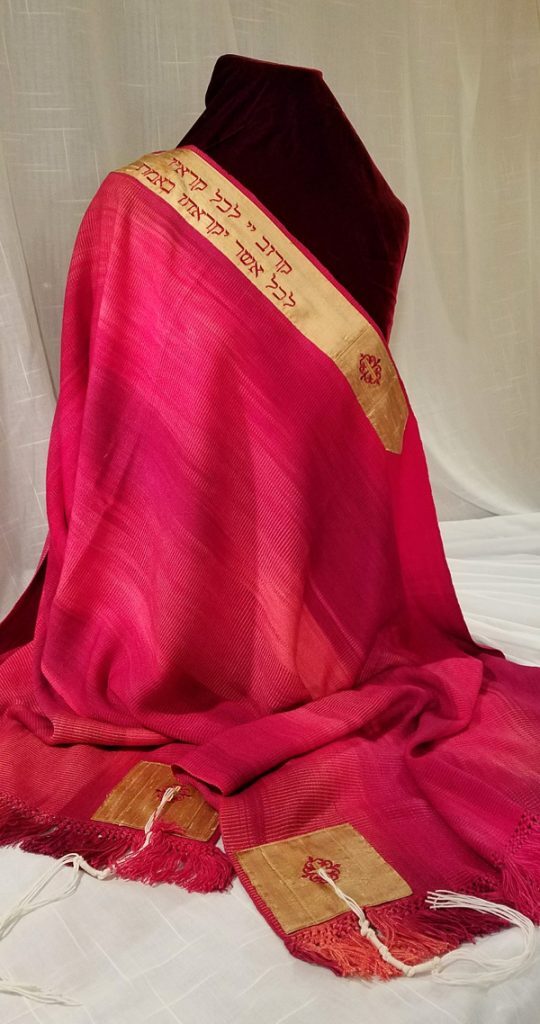
This blog post originally appeared on our Keepers of Tradition blog on March 20, 2018.